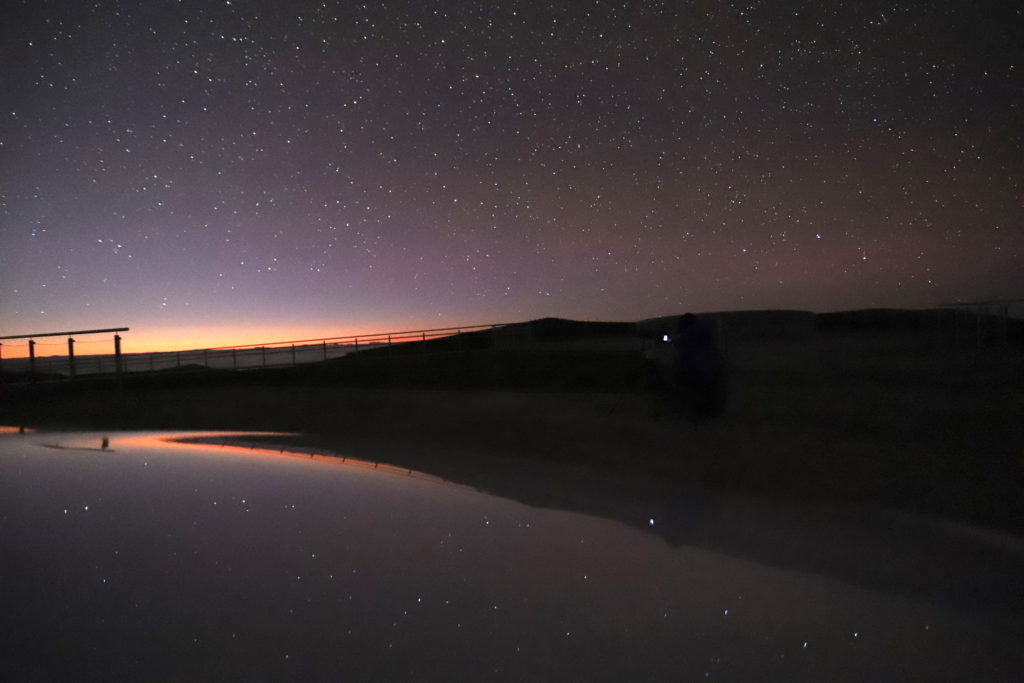Viewing time period – 18:31 – 22:06
Since the weather at 4,335 ft was cloudy with some precipitation Alan and I (Dave Shave-Wall) decided to take a trip up the mountain. The journey took around 30mins from our villa and we arrived at the new visitor centre first due to the route we took up the mountain. The centre is not finished yet even though it has been some 2.5 years being built. It’s an impressive set of buildings and has what seems to be at first glance 5 astrophotography pads with power.
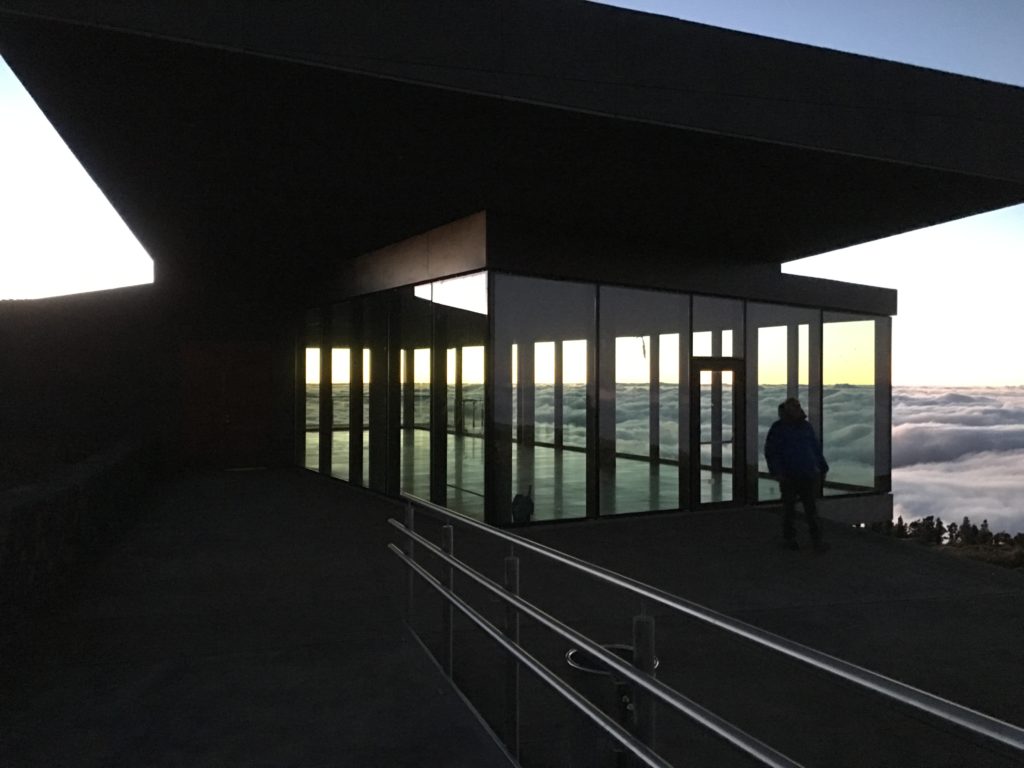
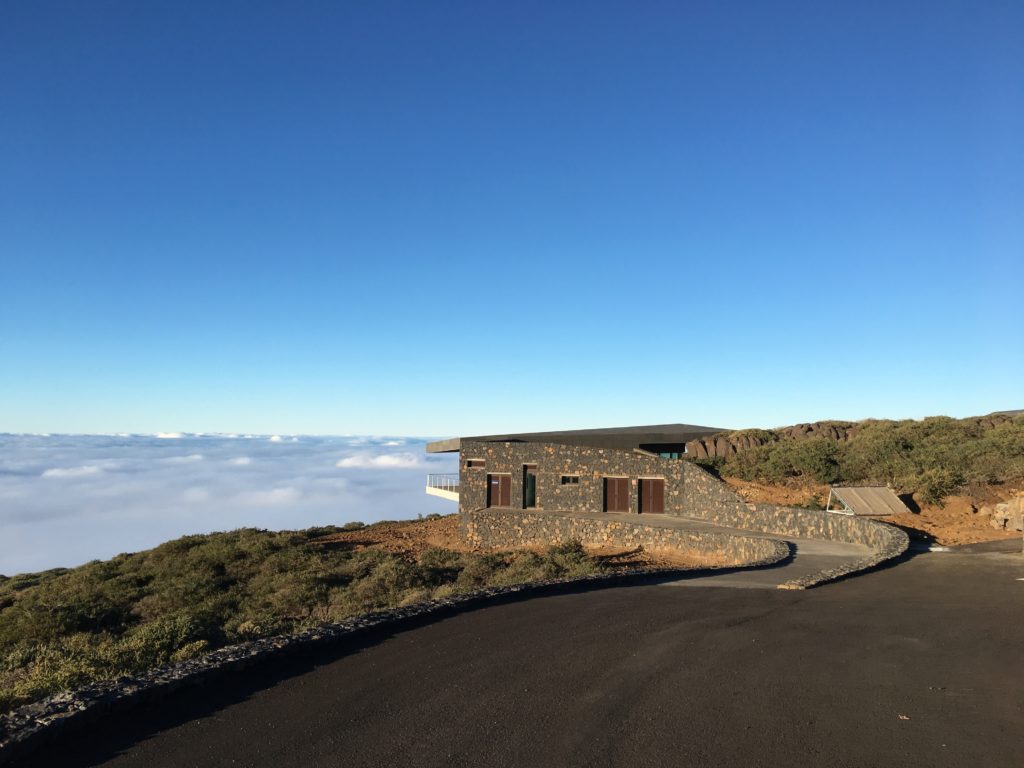
We then continued the short distance to the observatories and noticed the new member of the Magic family Magic III. This is a further telescope aimed at recording Cherenkov radiation.

A little drive further and we arrived at Roque de los Muchachos. We took the obligatory sunset images as well as photos of the southern part of the island buried under blankets of cloud making several high points look like islands amidst the condensed water.
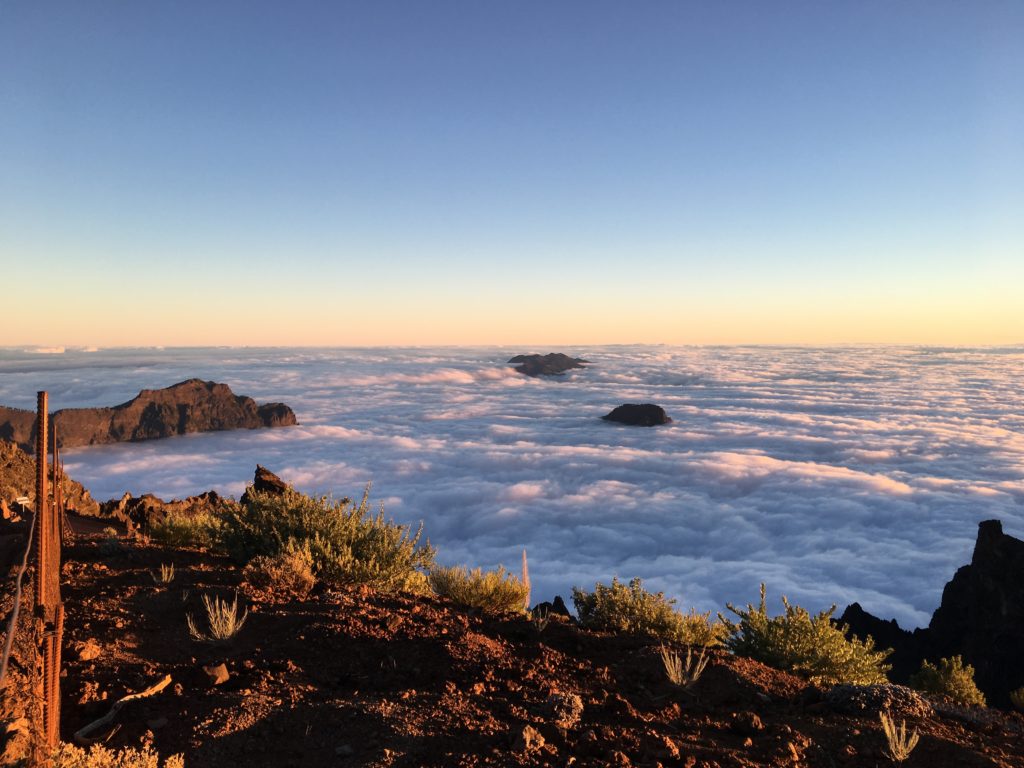
By now we were frozen due to the high winds that always occur at the very top, so we descended, stopping briefly at the GTC for more photos and then on back to the unfinished visitors centre where we would setup for the evening.
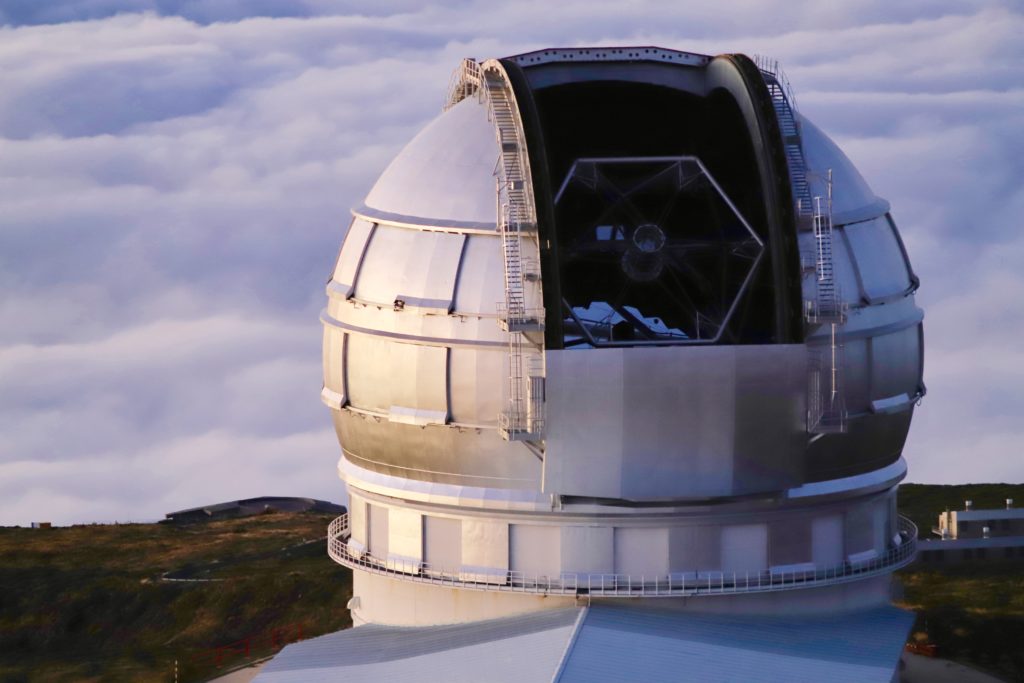
At 19:30 I took a look at Mercury through the 100mm giant Altair binoculars as it set within the blood red sky. Alan noted that the other point of light nearby and setting was in fact Antares, of course this time of year it sets early, so very different from our July trip this year when it was very much higher in the sky most of the night. Alan then moved the binos to Saturn which showed the ringed planets very crips and clearly with Titan at 11 o’clock and set within a star studded field.
Next, whilst Alan was imaging the top of the Teapot, I set about drawing M7. This was my first ever drawing, so choosing an open cluster was fairly straightforward. It took me a little under 30mins, much longer than I imagined. The following day I would find I had recorded it very well indeed seeing down to mag +11.

I then moved to NGC 188, an open cluster in Cepheus. I noted I could see it just about with direct vision (DV) however I found it more apparent with averted vision (AV), thus it was very faint.
Finally I moved on to NGC 6939 an open cluster in Cepheus (my chosen constellation this evening) and nearby and in the same field of view NGC 6946, also know as the Fireworks Galaxy close to 2 prominent stars. Now whilst in photos the Fireworks Galaxy is spectacular, in the binos it can only be seen with AV and if you know what you are looking at (or not) then you can imagine the galaxy as it is seen in photography.
Next I grabbed the 6D MkII and started to take some skyscape photos over the top of a glass roof lantern for the centre, but soon after, even though Alan was still imaging I became cold due to so often the case, not enough layers and so packed up and sat in the car. By 9pm we were heading the 30mins back down to our villa for dinner and wine. It would not be until 6:30am for me to venture back out from my warm bed to try and hunt down the comet 38p. However after much noise, maybe waking Alan as I tried to get the binos setup outside my bedroom on the patio, I for the life of me could not see the comet. Within 15mins the rising Sun ruined my view and I retired once again back to bed until 10am. The comet would have to wait until tomorrow.
